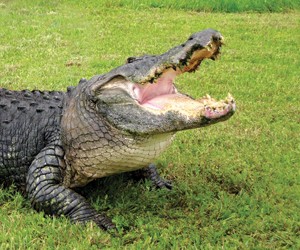Just as the San Francisco CVB is "ecothusiastic" about its Green SF microsite, one of the city’s cultural treasures, the California Academy of Sciences, has elevated eco-engineering to new heights. Saluting the Bay Area’s topography, the academy’s extraordinary 2.5-acre roof-top—event-ready terrace included—is an Eden of the times. It’s just one face of California’s great outdoors, a veritable all-terrain vehicle for transporting adventures.
Peak Performance
Mark Twain once remarked, "All scenery in California requires distance to give it its highest charm." From sunrise ballooning over Temecula Valley’s wine country to sunset skiing at Squaw Valley, California’s ultra-scenic vantage points are natural agenda-toppers.
High-level appointments await visitors at Mt. San Jacinto, where the Palm Springs Aerial Tramway travels 8,516 feet above the desert floor. Two restaurants and the Lookout Lounge provide gathering space, and 54 miles of pine forest trails beckon beyond, including the five-mile path to the 10,834-foot peak. While less lofty at 3,849 feet, the Bay Area’s Mount Diablo State Park offers panoramic views.
Considered one of America’s most accessible mountain getaways, the four-season wonderland of Lake Tahoe is home to the aptly named Heavenly Mountain Resort, in addition to other ski and outdoor adventure meccas such as North-Star-at-Tahoe. The lake itself, America’s largest alpine body of water, dramatically marries mountains and sky along its 22-mile length and 12-mile width and is an absolute splash with conventioneers and vacationers alike.
Averaging 400 inches of annual snowfall, Mammoth Mountain is among the West’s top ski resorts. Its lifts can transport 50,000 skiers and snowboarders per hour, and its unique terrain typically keeps the snow fresh from November to June.
Nestled in the San Bernadino National Forest, the Inland Empire’s mountain resorts of Big Bear Lake and Lake Arrowhead have drawn smaller groups and vacationing Californians for generations. Big Bear’s Snow Summit and Bear Mountain are popular winter stops, while Lake Arrowhead conferees have myriad summertime waterborne pursuits.
Coasting Along
That Southern California’s DNA is gilded by its fabled surf and sunshine culture is indisputable. Cloudy, though, is the question of the state’s best surfing locale. This July, Surfer magazine anointed Santa Cruz the nation’s premier surf town, prompting a stiff lip curl from Huntington Beach, known as "Surf City USA." Swell as the surf attributes truly are in each city, surfers from San Diego to San Francisco have any number of top picks, with Encinitas (third), San Clemente (7th) and Malibu (10th) also making Surfer magazine’s list.
Especially for groups in San Diego, coastal Orange County and Los Angeles, beach culture is readily accessible via SoCal’s piers and boardwalks. Celebrating its centennial this year, the storied Santa Monica Pier’s circa-1916 carousel is a choice event venue. Like its peers at Redondo, Pismo and other beaches, Santa Monica’s Pier swims in amusements and dining options.
At Newport Beach—named one of the nation’s cleanest this year by the National Resources Defense Council—groups can take to the sea in Newport’s signature Duffy Boats or aboard actor John Wayne’s Wild Goose yacht, operated by Hornblower Cruises and Events.
In chic Marina del Rey, groups can charter all manner of sea-faring events.
"It’s all about water here," says Beverly Moore, executive director of the Marina Del Rey CVB.
From Long Beach’s electric, eclectic bayfront to Pebble Beach’s idyllic 17-Mile Drive, water is California’s lifeblood.
Dubbed "the greatest meeting of land and sea in the world," Carmel’s Point Lobos State Reserve welcomes field-trippers, hikers and scuba divers, plus events at Carmel River State Beach.
At Point Reyes National Seashore north of San Francisco, visitors can marvel at 5,000-pound elephant seals and other marine life from Chimney Rock.
Parking Spots
California’s coastal redwood parks—some 40 in all, stretching from Humboldt County to Big Sur—are state signatures. Logging has claimed most of these Ice Age ancients, but groups can still meet these marvels at places like Humboldt’s Redwood National Park, where some old-growth titans reportedly tower higher than Lady Liberty.
Mighty, too, are the behemoths of Sequoia National Park—established in 1890 as America’s second (behind Yellowstone) national park and home to colossal Mt. Whitney—and nearby Kings Canyon National Park, with both wildernesses also featuring granite domes, waterfalls and extensive caving opportunities.
Awe-inspiring at every turn, Yosemite National Park is a natural masterpiece beyond compare.
"Our backyard in Yosemite Valley includes El Capitan, the towering cliffs of Glacier Point and Yosemite Falls, America’s highest waterfall," says Kenny Karsh, public relations manager for the park’s concessions operator, Delaware North.
Meetings are best reserved for the shoulder and off-season months, he adds, with activities including Merced River rafting, hiking and skiing at Badger Pass.
In Santa Rosa, where the CVB recently adopted "Place of Plenty" as its slogan, a popular retreat is the 400-acre Safari West. Populated by over 600 exotic animals, this "Sonoma Serengeti" comes with 31 tent cabins (in-tent massages available) and two meeting spaces.
Ringed by dormant volcanoes, San Luis Obispo’s hiking and biking trails include the spectacular overlook of 1,300-foot Bishop’s Peak.
In San Diego, Torrey Pines State Reserve, a favorite among hikers, is a fantasy of deep ravines.
Bountiful botany provides planners with major flower power. Showing its softer side, the prison isle of Alcatraz now offers tours of gardens once tended by inmates. Rosy gatherings are assured on the terraced steps of Berkeley’s scenic Municipal Rose Garden, while cacti are the star attractions at the Living Desert Zoo and Gardens in Indian Wells. Other blooming backdrops include the Quail Botanical Gardens in Encinitas and the mystical Mendocino Coast Botanical Gardens in Fort Bragg.
The 600,000-acre Anza-Borrego Desert State Park in eastern San Diego County—a treasure trove of paleontology, with tours departing from its Nature Center—and the 13,000-acre Coachella Preserve near Palm Springs are among California’s vast desert escapes.







